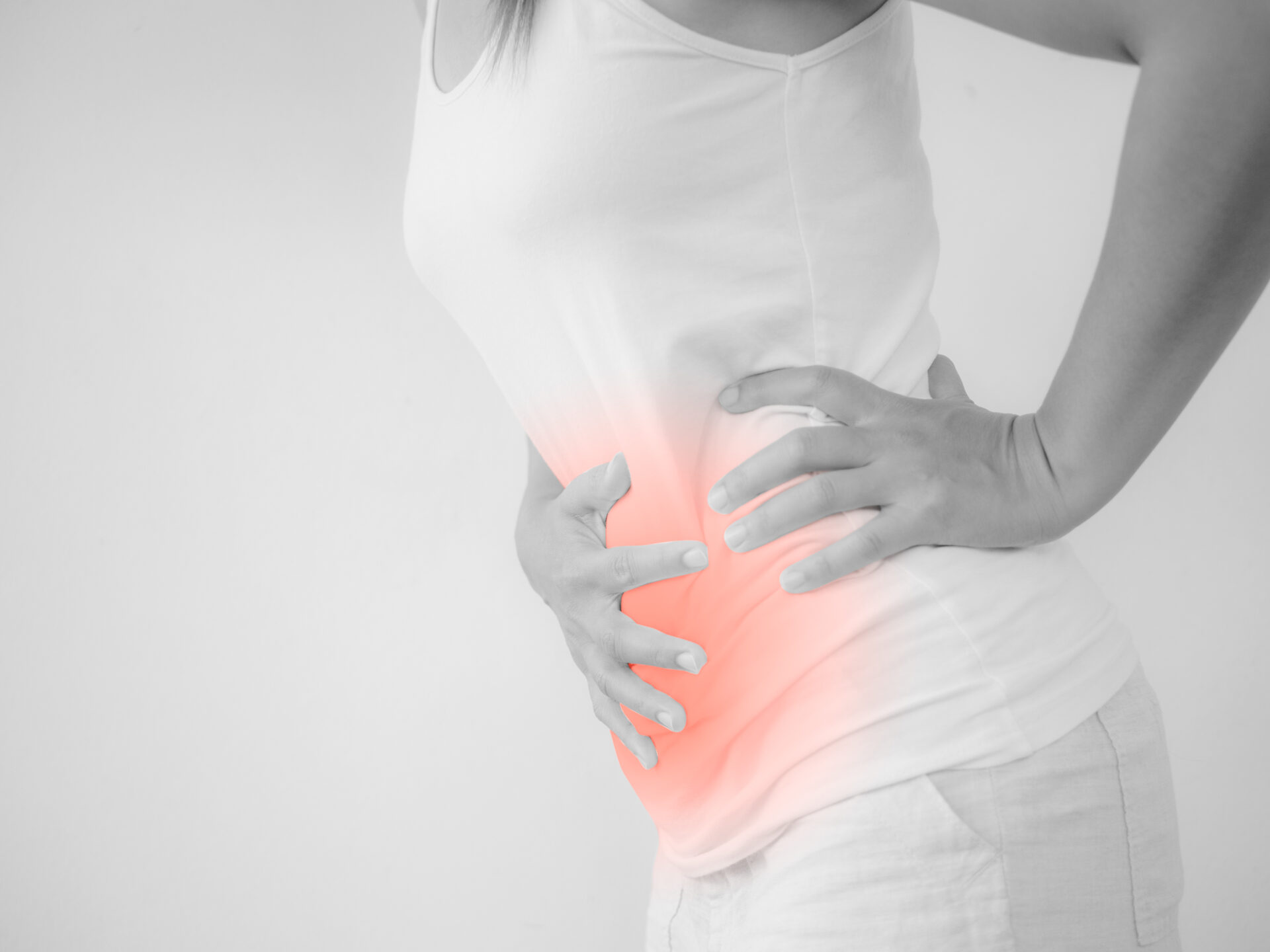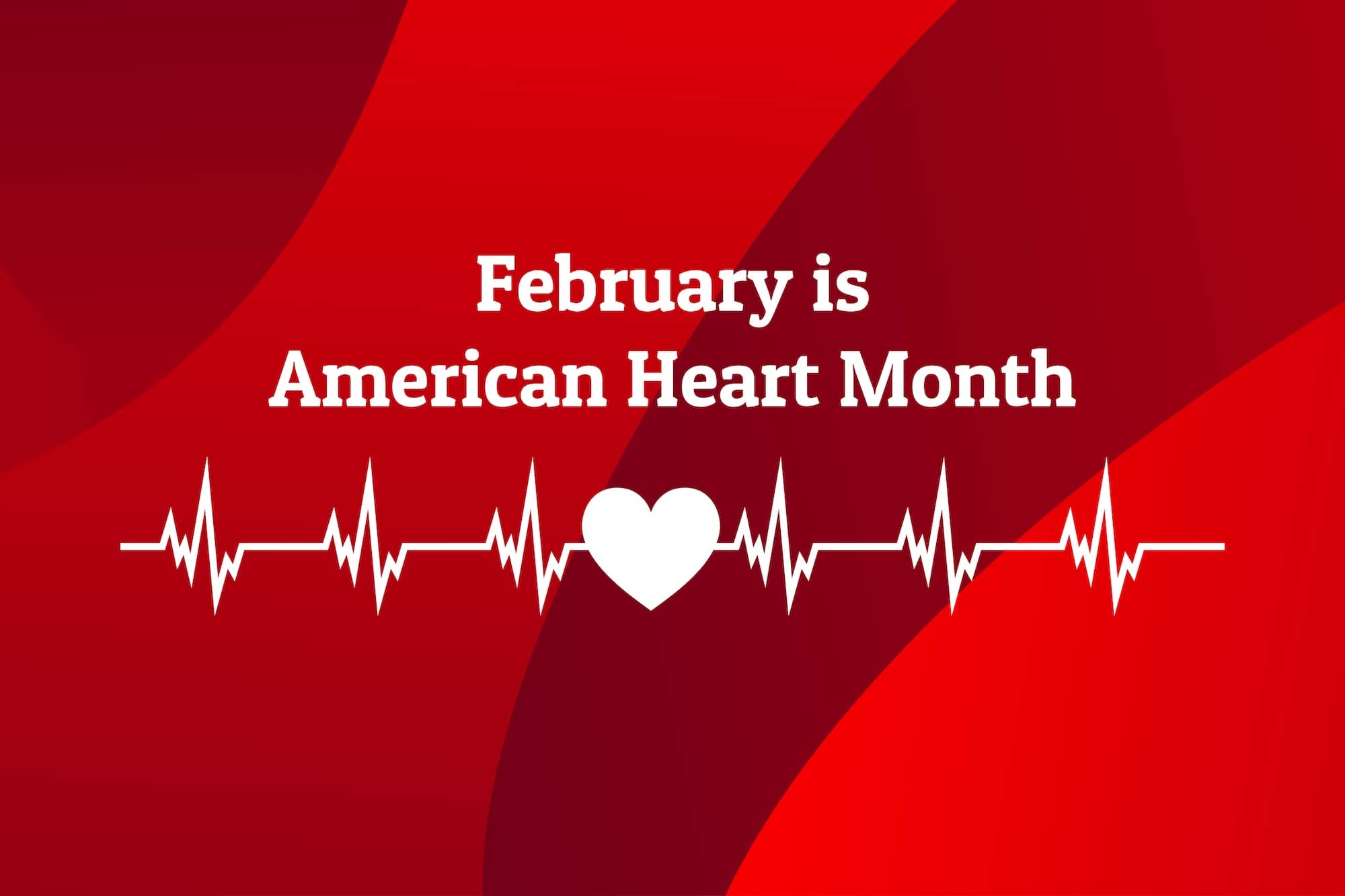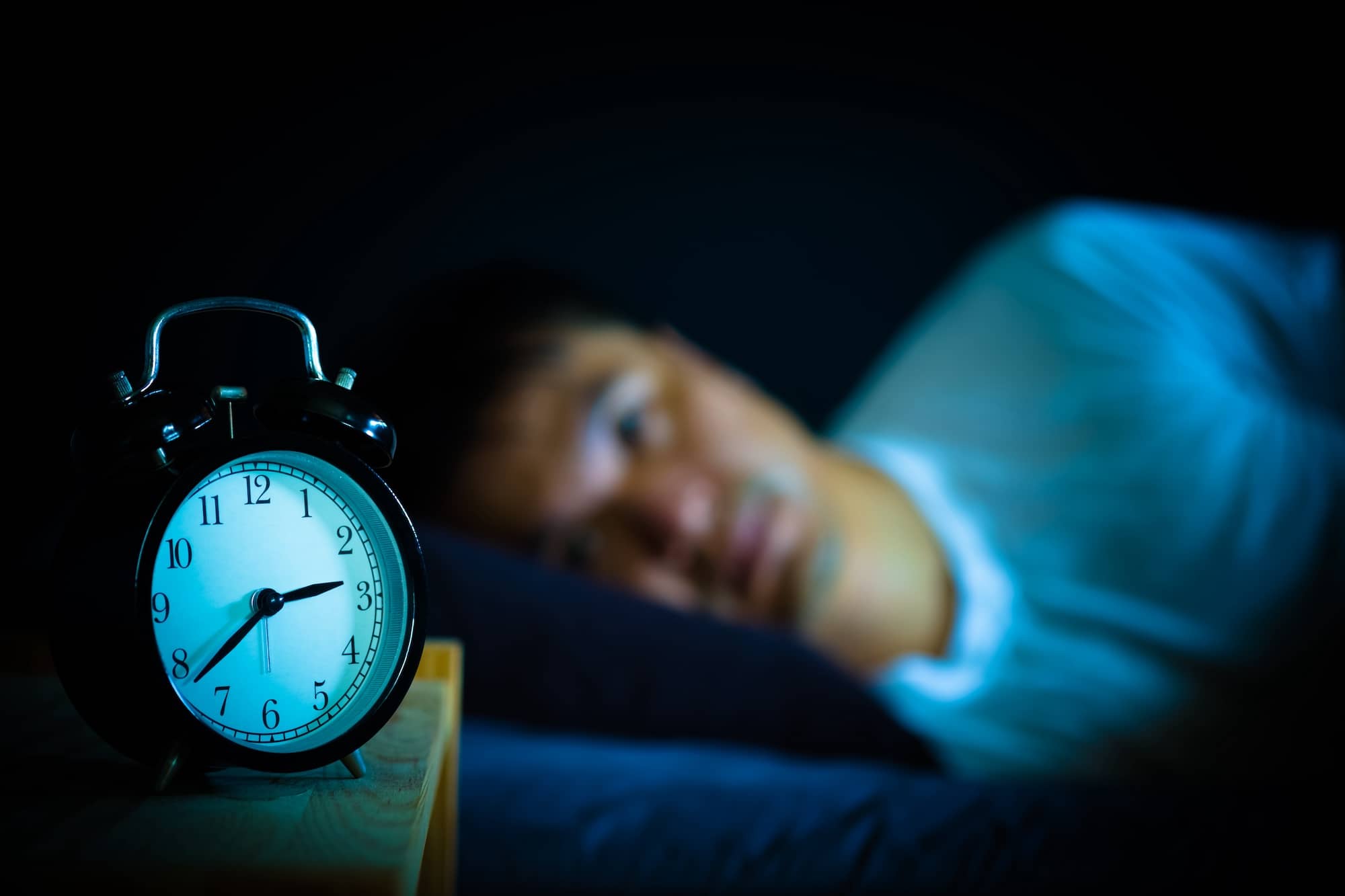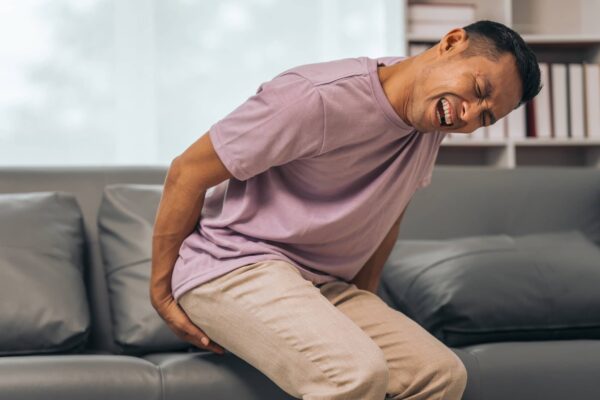Posts by Barton Chiropractic Clinic
Menstrual pain
Menstrual pain, or primary dysmenorrhea, affects many women, often disrupting daily life with cramps, lower back pain, and discomfort. While over-the-counter medications provide temporary relief, they do not address the underlying causes. Chiropractic care offers a natural, drug-free approach to managing menstrual pain by promoting spinal alignment and enhancing nervous system function.
Menstrual Pain is commonly caused by uterine contractions triggered by prostaglandins, leading to cramping and discomfort. However, spinal misalignments, particularly in the lumbar and sacral regions, can exacerbate pain by interfering with nerve signals and circulation to the reproductive organs. Chiropractic adjustments focus on restoring proper spinal alignment, improving nerve function, and reducing muscle tension, which may help alleviate menstrual cramps.
Key Benefits of Chiropractic for Menstrual Pain Relief
- Improved Nervous System Function – The nervous system controls the reproductive system, and spinal misalignments can create interference. Chiropractic adjustments optimize nerve communication, promoting better hormonal balance and reducing cramping.
- Reduced Pelvic and Lower Back Tension – Misalignment in the lower spine and pelvis can contribute to increased tension and discomfort during menstruation. Regular chiropractic care helps alleviate strain in these areas, improving mobility and comfort.
- Enhanced Circulation – Restricted blood flow in the lower back and pelvic region can intensify menstrual pain. Chiropractic adjustments and soft tissue techniques help enhance circulation, promoting natural pain relief.
- Decreased Reliance on Medications – Many women rely on painkillers to manage menstrual pain, which may have side effects with long-term use. Chiropractic care provides a holistic alternative that supports overall well-being without medication.
Additional Supportive Therapies: Along with spinal adjustments, chiropractors may recommend complementary therapies to enhance relief from menstrual pain, including:
- Lifestyle and dietary modifications to reduce inflammation
- Stretching and exercise to improve pelvic mobility
- Massage therapy to relieve muscle tension
Experience Natural Relief with Chiropractic Care: If menstrual pain is interfering with your daily life, chiropractic care may offer the relief you need. By addressing spinal misalignments and enhancing overall body function, chiropractic provides a natural, effective way to support menstrual health. Schedule a consultation with a chiropractor to explore how this holistic approach can improve your well-being and help you experience a more comfortable cycle.
Click here to contact our Office or call 708-922-1400
Spring Cleaning
Spring Cleaning Your Health: A Chiropractic Approach
Spring is the season of renewal—a time to declutter, refresh, and set the stage for healthier habits. While many people focus on tidying up their homes, it’s just as important to “spring clean” your health. Chiropractic care offers a natural way to reset your body, improve mobility, and enhance overall well-being. Here’s how you can embrace a fresh start this season with chiropractic support.
1. Clear Out Tension and Stress
Just as clutter in your home can create chaos, tension in your body can lead to discomfort and stiffness. Poor posture, stress, and everyday activities can cause misalignments in the spine, leading to headaches, back pain, and fatigue. Chiropractic adjustments help restore proper alignment, allowing your body to function optimally and reducing stress-related tension.
2. Improve Mobility for Outdoor Activities
With warmer weather comes more opportunities for outdoor exercise—whether it’s hiking, biking, or simply walking in the park. However, limited mobility or lingering aches and pains can hold you back. Chiropractic care enhances joint flexibility, reduces stiffness, and supports better movement, helping you fully enjoy your favorite springtime activities.
3. Detox Your Lifestyle
Spring cleaning isn’t just about physical spaces—it’s also a great time to evaluate your lifestyle choices. Chiropractic care promotes a holistic approach to wellness, encouraging better posture, nutrition, and movement. Pairing regular adjustments with healthy habits such as stretching, hydration, and mindful breathing can lead to long-term benefits.
4. Strengthen Your Immune System
A well-functioning nervous system supports a strong immune response. Since chiropractic adjustments help ensure the nervous system is free from interference, they can enhance your body’s ability to fight off seasonal allergies, colds, and other common ailments. Keeping your spine aligned means your body is better equipped to adapt to environmental changes.
5. Refresh Your Sleep Patterns
Quality sleep is essential for overall health, yet many people struggle with poor sleep due to pain or stress. Chiropractic care can improve spinal alignment, reduce discomfort, and promote relaxation, leading to deeper, more restful sleep. A well-rested body is more energized and ready to take on new challenges.
Embrace a Fresh Start with Chiropractic Care
Spring is the perfect time to prioritize your health and well-being. By incorporating chiropractic adjustments into your routine, you can reduce pain, improve mobility, and enhance your overall quality of life. Just as you refresh your home, take the time to refresh your body—because a well-aligned spine leads to a healthier, more vibrant you.
Click here to contact our Office or call 708-922-1400
Longer Days
How Longer Days Affect Your Health and How Chiropractic Care Can Help
As the days grow longer, our bodies naturally respond to the increased sunlight and extended hours of daylight. While this seasonal shift brings many benefits, it can also disrupt sleep patterns, energy levels, and overall well-being. Understanding these changes and how chiropractic care can support your body’s adaptation is key to maintaining optimal health.
The Impact of Longer Days on Your Health
- Circadian Rhythm Disruptions – Our internal body clock, or circadian rhythm, is influenced by natural light. Longer daylight hours can delay melatonin production, making it harder to fall asleep and potentially leading to sleep disturbances.
- Increased Energy and Activity Levels – With more daylight, people tend to stay active longer, engaging in outdoor activities and exercise. While this is great for overall health, increased physical activity can sometimes lead to muscle strain or joint misalignments.
- Vitamin D Boost – Sunlight exposure increases vitamin D production, which is essential for bone health, immune function, and mood regulation. However, too much sun exposure can also lead to dehydration and fatigue if not managed properly.
- Potential Stress and Fatigue – Longer days often mean busier schedules, which can lead to increased stress and physical exhaustion. Over time, this can impact posture, spinal alignment, and overall wellness.
How Chiropractic Care Can Help
- Improves Sleep Quality – Chiropractic adjustments help regulate the nervous system, allowing your body to adapt more easily to changes in sleep patterns.
- Supports Joint and Muscle Health – Regular chiropractic care ensures proper alignment, reducing strain from increased activity during longer days.
- Enhances Energy and Focus – By optimizing nervous system function, chiropractic adjustments help maintain consistent energy levels and prevent fatigue.
- Reduces Stress and Tension – Chiropractic care promotes relaxation by relieving muscle tension and improving circulation, helping you stay balanced during seasonal changes.
As the days continue to lengthen, paying attention to how your body responds is essential. Chiropractic care can provide the support needed to keep you feeling your best. If you’re experiencing sleep disturbances, fatigue, or increased physical strain, consider scheduling an adjustment with Dr. Barton to help your body transition smoothly into the longer days ahead.
Click here to contact our Office or call 708-922-1400
Chiropractic & Fertility
Many couples struggling with fertility may not realize that spinal alignment plays a crucial role in reproductive health. The nervous system controls every function in the body, including the reproductive organs. When the spine is misaligned, particularly in the pelvis and lower back, it can interfere with nerve signals, disrupt hormone balance, and contribute to difficulties in conception.
The Connection Between the Spine and Reproductive Health
The spine houses the nervous system, which communicates with every organ, including the uterus, ovaries, and other reproductive structures. Misalignments, or subluxations, in the lower spine and pelvis can create tension and imbalances that may hinder reproductive function. By restoring proper alignment, chiropractic adjustments can help optimize the body’s natural ability to conceive.
How Chiropractic Care Supports Fertility
- Pelvic Alignment – A misaligned pelvis can lead to tension in the surrounding muscles and ligaments, restricting blood flow and nerve communication to reproductive organs. Chiropractic adjustments help create a balanced and open pelvic environment, increasing the chances of conception.
- Hormonal Balance – The nervous system regulates hormone production, which is essential for ovulation and a healthy menstrual cycle. Chiropractic care helps remove nerve interference, allowing the body to regulate hormones more effectively.
- Improved Blood Flow – Proper circulation to the reproductive organs is vital for fertility. Chiropractic adjustments can enhance blood flow by relieving tension and improving alignment in the spine and pelvis.
- Reduced Stress – Stress plays a significant role in fertility struggles, as high cortisol levels can disrupt reproductive hormones. Chiropractic care promotes relaxation, reduces tension, and supports overall well-being, helping to create a more favorable environment for conception.
Real Results: Chiropractic Success Stories
Chiropractic care has contributed to numerous successful pregnancies. We’ve seen cases where women struggling with fertility conceived after receiving chiropractic adjustments. By aligning the pelvis, hips, and spine, we helped optimize their body’s natural reproductive function, leading to positive outcomes.
Chiropractic Care: A Natural Approach to Fertility
If you or someone you know is facing fertility challenges, chiropractic care may be a valuable addition to your wellness routine. By ensuring the spine and nervous system are functioning at their best, you can support your body’s natural ability to conceive.
Schedule a consultation today to explore how chiropractic adjustments can help you on your journey to parenthood!
Click here to contact our Office or call 708-922-1400
Preventing Pain
Preventing Pain from Long Hours at a Desk
Sitting for long hours at a desk places constant strain on your spine, shoulders, and lower back. Many desk workers experience stiffness, poor posture, and chronic pain due to prolonged sitting and improper ergonomics. Without proper care, these issues can lead to headaches, reduced mobility, and long-term spinal misalignment.
How Sitting Affects Your Spine
When you sit for extended periods, your posture tends to slouch forward, causing your shoulders to round and your lower back to compress. Over time, this posture weakens core muscles and increases pressure on the spine. Poor sitting habits also contribute to tight hip flexors, misaligned vertebrae, and restricted blood flow, which can worsen discomfort and fatigue.
How Chiropractic Care Helps Desk Workers
Chiropractic adjustments realign the spine, improve posture, and relieve muscle tension caused by prolonged sitting. By restoring proper alignment, chiropractic care helps your body function more efficiently, reducing pain and preventing long-term damage. Many desk workers report less stiffness, improved flexibility, and increased energy after regular chiropractic sessions.
In addition to adjustments, chiropractors often provide personalized advice on posture, stretches, and ergonomic improvements to support spinal health.
Tips to Improve Posture and Reduce Pain
Along with chiropractic care, you can take simple steps to protect your spine:
Sit with proper posture – Keep your feet flat on the floor, knees at a 90-degree angle, and shoulders relaxed. Your computer screen should be at eye level to prevent neck strain.
Take movement breaks – Stand up and stretch every 30–60 minutes to keep your muscles engaged and prevent stiffness.
Use an ergonomic chair – A chair with lumbar support promotes proper spinal alignment and reduces back strain.
Strengthen your core – Exercises like planks and bridges support spinal health and improve posture.
Stretch regularly – Focus on stretching your hip flexors, shoulders, and lower back to release tension and improve flexibility.
Protect Your Spine with Chiropractic Care
If you experience back pain, stiffness, or tension from desk work, chiropractic care offers a safe and effective solution. Regular adjustments, combined with better posture and movement habits, can help you feel stronger, more comfortable, and more productive throughout your workday.
Don’t let desk work ruin your posture—schedule a chiropractic visit today and take the first step toward a pain-free work life!
Click here to contact our Office or call 708-922-1400
Winter Blues
As the colder months set in, many people experience a drop in mood, lower energy levels, and even symptoms of seasonal affective disorder (SAD). The shorter days and colder temperatures can take a toll on both physical and mental well-being. While light therapy, exercise, and a balanced diet are common solutions, one often-overlooked approach to beating the winter blues is chiropractic care.
The Spine-Mind Connection
Your spine plays a critical role in overall health, including mental well-being. Misalignments, or subluxations, in the spine can interfere with the nervous system’s ability to function properly. Since the nervous system controls mood regulation, chronic tension and spinal misalignment may contribute to feelings of stress, anxiety, and fatigue. Chiropractic adjustments help restore proper alignment, allowing the nervous system to communicate effectively and improving overall wellness.
How Chiropractic Adjustments Improve Mood
- Reduces Stress and Tension – Misalignments in the spine can lead to muscle tightness and tension, which contribute to feelings of stress. Chiropractic care helps release tension, promoting relaxation and mental clarity.
- Boosts Endorphins – Spinal adjustments stimulate the nervous system and may help increase the release of endorphins, the body’s natural mood-boosting chemicals. This can create a sense of well-being and help combat the sluggishness of winter.
- Enhances Sleep Quality – Poor sleep is a common issue in the colder months and can negatively affect mood. Chiropractic adjustments can relieve discomfort and help regulate sleep patterns, leading to more restful and restorative sleep.
- Supports Immune Function – The immune system is closely linked to mental and physical health. When your body is fighting off illness, it can leave you feeling drained and irritable. Regular chiropractic care can help optimize immune function, keeping you healthier and more energized during the winter months.
Stay Ahead of the Winter Blues
If you find yourself struggling with low energy or mood changes during the colder months, consider adding chiropractic care to your wellness routine. By keeping your spine aligned and your nervous system functioning properly, you can experience improved mood, better sleep, and a greater sense of overall well-being.
Schedule an adjustment today and give your body the boost it needs to take on the winter season with a renewed sense of energy and positivity!
Click here to contact our Office or call 708-922-1400
Heart Health
Heart Health & Chiropractic: The Surprising Connection
February is Heart Health Month, a time to focus on cardiovascular wellness and the steps we can take to keep our hearts strong. While diet and exercise are well-known factors in heart health, one often-overlooked contributor is spinal alignment. Proper spinal health plays a crucial role in circulation, nerve function, and overall cardiovascular well-being. Here’s how chiropractic care can support a healthier heart.
The Spine’s Role in Circulation
The spine houses and protects the central nervous system, which controls every function in the body, including heart rate and circulation. Misalignments in the spine, known as subluxations, can create nerve interference, disrupting signals between the brain and heart. This interference may contribute to issues such as poor circulation, increased blood pressure, and even heightened stress levels—factors that all impact heart health.
Chiropractic Care and Blood Pressure Regulation
Research has shown that spinal adjustments, particularly in the upper cervical spine, can help regulate blood pressure. A study published in the Journal of Human Hypertension found that a specific chiropractic adjustment to the atlas vertebra resulted in significant reductions in blood pressure, comparable to the effects of some blood pressure medications. By restoring proper alignment, chiropractic care may help support cardiovascular function naturally.
Reducing Stress for a Healthier Heart
Chronic stress is a major contributor to heart disease. When the body is under stress, it releases cortisol and adrenaline, which can increase heart rate and blood pressure. Chiropractic care has been shown to reduce stress levels by improving nervous system function and promoting relaxation. Many patients report feeling a sense of calm and balance after an adjustment, which can have positive effects on heart health over time.
Enhancing Circulation and Mobility
Spinal misalignments can lead to muscle tension, restricted movement, and poor circulation. Chiropractic adjustments help improve blood flow by relieving pressure on nerves and blood vessels. Better circulation means that oxygen and nutrients are more efficiently delivered throughout the body, supporting cardiovascular health and overall vitality.
Prioritize Your Heart Health This Month
This Heart Health Month, consider chiropractic care as part of your wellness routine. By ensuring your spine is properly aligned, you’re not only supporting a healthier nervous system but also promoting better circulation, reduced stress, and improved heart function.
Schedule a chiropractic visit today and take a proactive step toward a healthier heart and a healthier you!
Click here to contact our Office or call 708-922-1400
Sleep Quality
Getting a good night’s sleep is essential for overall health and well-being, yet many people struggle with sleep issues. From tossing and turning to waking up with aches and pains, poor sleep can impact your energy, mood, and productivity. One often overlooked solution is spinal alignment, a key focus of chiropractic care. By maintaining a properly aligned spine, you can improve your sleep quality and set a positive tone for the year ahead.
The Spine and Sleep Connection
Your spine plays a crucial role in your body’s overall function, especially when it comes to sleep. The spinal column houses the central nervous system, which controls and coordinates every function in the body, including sleep quality. Misalignments in the spine, known as subluxations, can disrupt the nervous system’s ability to communicate effectively. This interference can lead to discomfort, pain, and even stress—all of which can prevent you from achieving restful sleep.
How Chiropractic Care Helps
Chiropractors specialize in identifying and correcting spinal misalignments through gentle adjustments. Here’s how this can improve your sleep:
- Relieves Pain and Tension: Misalignments can cause muscle tension, joint stiffness, and localized pain. Chiropractic adjustments help alleviate these issues, allowing your body to relax and rest more comfortably.
- Reduces Stress and Anxiety: A misaligned spine can contribute to heightened stress levels. Regular adjustments promote relaxation by restoring balance to the nervous system, helping you fall asleep more easily.
- Improves Circulation: Proper spinal alignment enhances blood flow and reduces pressure on nerves, supporting better oxygen and nutrient delivery throughout the body. This can help regulate sleep cycles and improve overall sleep quality.
- Encourages Healthy Sleep Posture: Many sleep problems stem from poor posture. Chiropractors can provide guidance on optimal sleeping positions and recommend supportive pillows or mattresses tailored to your needs.
Setting a Positive Tone for 2025
By prioritizing spinal health, you’re investing in a foundation for better sleep and overall wellness. Improved sleep quality leads to better energy, focus, and resilience—key factors for achieving your goals in the year ahead. Consider adding regular chiropractic visits to your self-care routine to address underlying issues and keep your spine in optimal condition.
Start the year off right by giving your body the care it deserves. When your spine is aligned, your body can rest, recover, and thrive. Make 2025 the year of better sleep and better health!
Click here to contact our Office or call 708-922-1400
Butt pain
Butt pain can interfere with your daily life, making it difficult to sit, walk, or perform routine tasks. This discomfort often originates from the lower back, hips, or sciatic nerve, and addressing it requires a targeted approach. Dr. Barton specializes in musculoskeletal health and provides effective, non-invasive solutions for managing and eliminating butt pain.
Common Causes of Butt Pain
Several factors can contribute to pain in the gluteal region. One frequent culprit is piriformis syndrome, where the piriformis muscle compresses the sciatic nerve, leading to pain that radiates down the leg. Sciatica, caused by irritation or compression of the sciatic nerve, is another common condition. Other causes include sacroiliac joint dysfunction, lower back issues like herniated discs, and muscle strains from overuse or injury.
How Chiropractic Care Helps
Chiropractors use a holistic approach to identify and treat the root cause of butt pain rather than just addressing symptoms. Through a thorough evaluation, they determine whether your pain stems from misaligned joints, nerve irritation, or muscle dysfunction.
- Spinal Adjustments
Misalignments in the lower back or sacroiliac joints can contribute to butt pain. Chiropractors perform spinal adjustments to restore proper alignment, reduce nerve pressure, and improve joint function. - Soft Tissue Therapy
Chiropractors often incorporate soft tissue techniques, such as myofascial release, to address muscle tension or spasms in the gluteal region. These therapies help reduce pain and improve mobility. - Stretching and Strengthening Exercises
Targeted exercises enhance flexibility and strengthen the muscles supporting the hips and lower back. Chiropractors guide patients through specific routines to address imbalances and prevent future issues. - Posture and Ergonomic Advice
Poor posture or prolonged sitting can exacerbate butt pain. Chiropractors offer personalized advice on posture and workstation ergonomics to minimize strain on the affected areas. - Lifestyle Modifications
For long-term relief, chiropractors may recommend lifestyle adjustments, including proper exercise routines and dietary changes to support musculoskeletal health.
Benefits of Chiropractic Care
Chiropractic care offers a drug-free, non-surgical solution to butt pain. By addressing the underlying cause, it provides lasting relief while improving overall function and mobility. Patients often report significant improvements in their quality of life after consistent treatment.
If butt pain is holding you back, a chiropractor can help you find relief and regain control of your daily activities. Take the first step toward a pain-free life with chiropractic care!
Click here to contact our Office or call 708-922-1400
A Balanced Diet
Maintaining a balanced diet plays a vital role in supporting your overall well-being. However, certain foods can increase inflammation, cause chronic diseases, and harm your health. By limiting or avoiding these items, you can improve your body’s function and feel your best. Here’s what to watch out for:
10 Foods to Avoid for Better Health
1. Cut Out Processed Meats
You expose yourself to high levels of sodium, saturated fats, and harmful preservatives like nitrates when you eat processed meats like bacon, sausage, or deli cuts. Studies link these foods to heart disease and certain cancers.
2. Avoid Sugary Breakfast Cereals
When you start your day with sugary cereals, you set yourself up for blood sugar spikes and crashes. These cereals lack nutrients and increase your risk of type 2 diabetes and obesity.
3. Skip Refined Grains
Eating white bread and pastries floods your body with refined grains stripped of fiber and nutrients. These foods spike blood sugar and contribute to weight gain and inflammation.
4. Say No to Packaged Snacks
Packaged snacks, including chips, crackers, and cookies, pack in unhealthy fats, sugars, and additives. By indulging frequently, you increase inflammation and your risk of chronic disease.
5. Cut Out Sugar-Sweetened Beverages
Sodas and sweetened teas overload your body with sugar and provide no nutritional benefits. Drinking these regularly contributes to weight gain, metabolic disorders, and type 2 diabetes.
6. Skip Fried Foods
Eating fried foods means consuming calorie-dense meals full of unhealthy fats. Frying also produces harmful compounds that elevate your risk of heart disease and certain cancers.
7. Avoid Non-Dairy Coffee Creamers
Non-dairy creamers often include trans fats and added sugars, which harm your heart and promote inflammation. Choose natural creamers to keep your coffee healthy.
8. Pass on Pre-Made Dough and Baked Goods
Pre-made doughs and commercial baked goods sneak in trans fats and sugars that damage your heart and overall health. Making your own ensures healthier options.
9. Ditch Artificial Sweeteners
Studies suggest artificial sweeteners disrupt metabolism and gut health, making you crave more sweets and potentially leading to weight gain.
10. Limit High-Sodium Foods
Canned soups, processed foods, and salty snacks overload your system with sodium, raising your blood pressure and heart disease risk. Opt for low-sodium options instead.
Focus on Whole Foods By swapping out these foods for healthier, whole alternatives, you can reduce inflammation, improve energy levels, and protect yourself from chronic diseases.
Maintain a balanced diet. Your body will thank you for it!
Click here to contact our Office or call 708-922-1400










